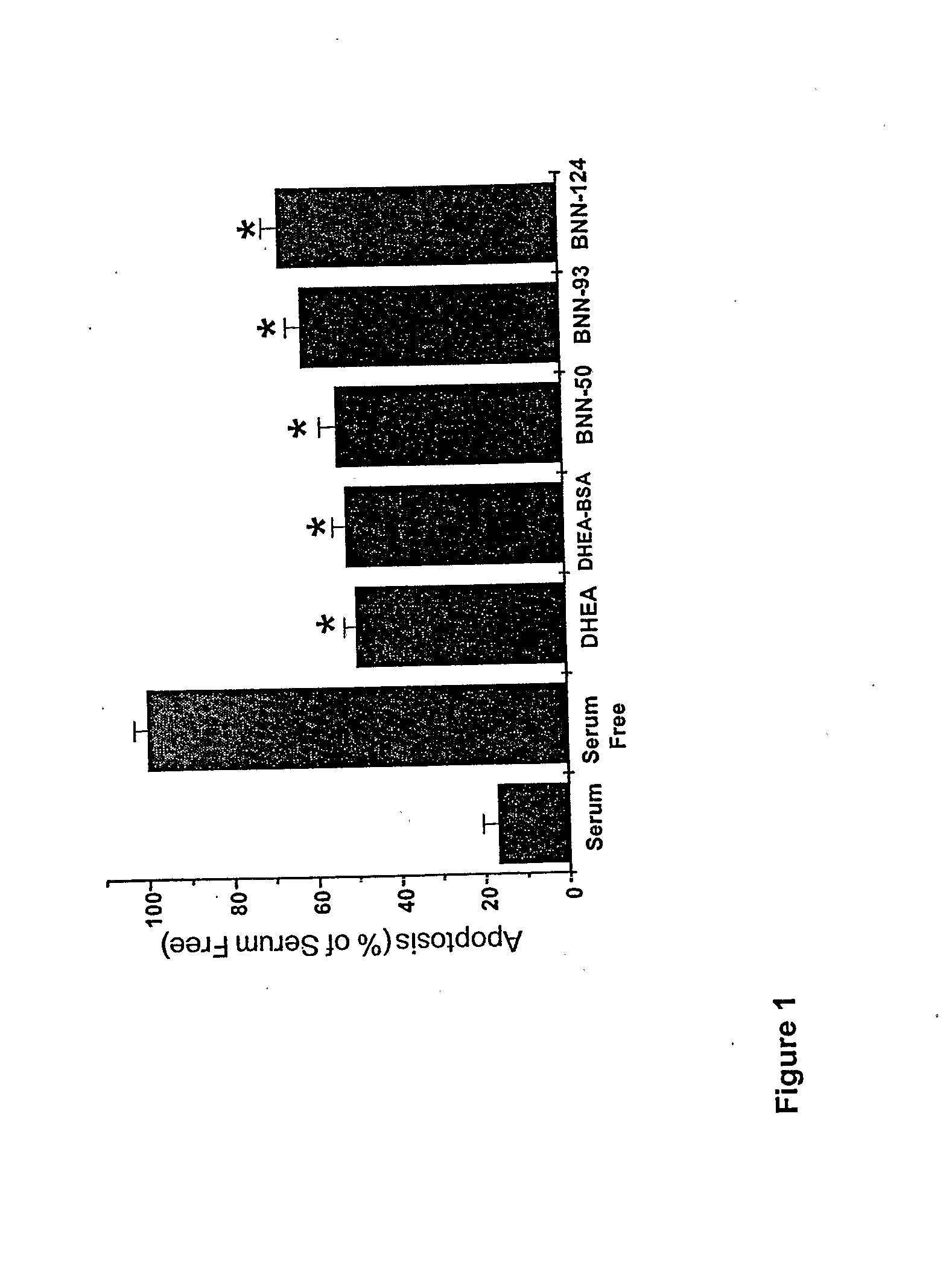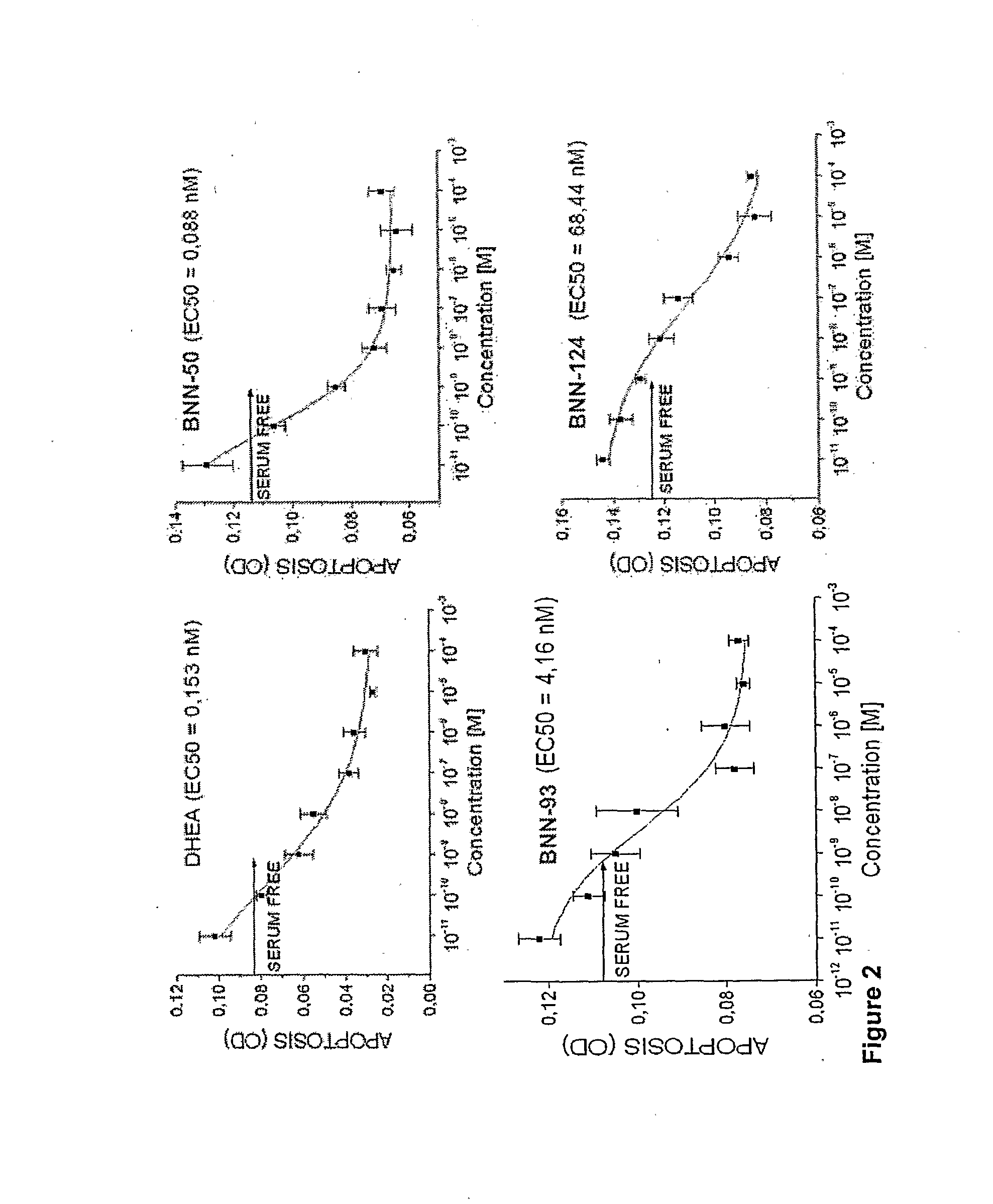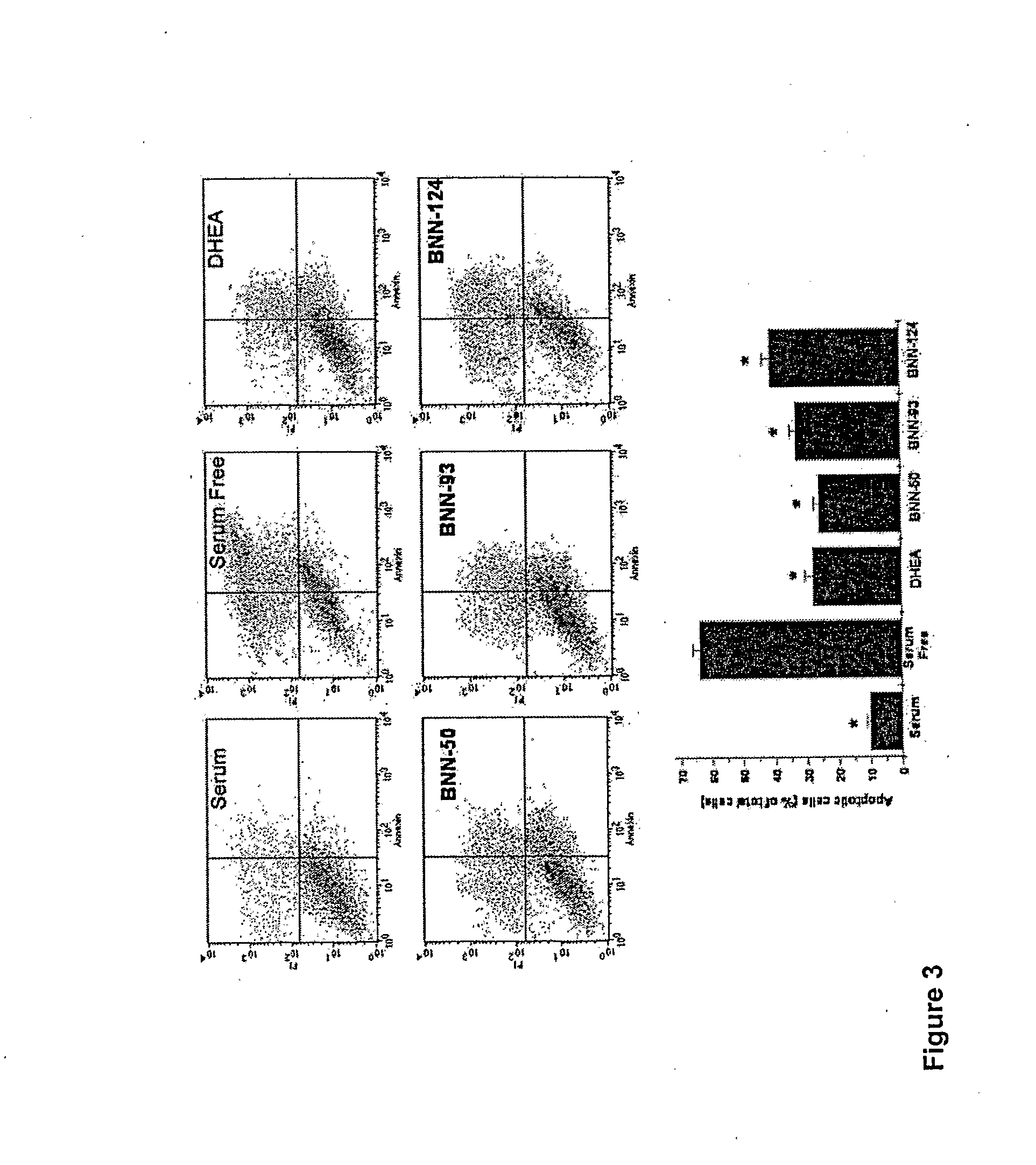Neurosteroid compounds
a technology of neuroteroids and compounds, applied in the field of neuroteroid compounds, can solve the problems of debilitating symptoms, loss of sensory or motor ability, loss of memory,
- Summary
- Abstract
- Description
- Claims
- Application Information
AI Technical Summary
Benefits of technology
Problems solved by technology
Method used
Image
Examples
example 1
Preparation of 17β-spiro-[5-androsten-17,2′-oxiran]-3β-ol
[0083]
[0084]To a solution of dehydroepiandrosterone (500 mg, 1.73 mmol) in anhydrous DMF (10 mL), trimethylsulfonium iodide (530 mg, 2.60 mmol) and t-BuOK (292 mg, 2.60 mmol) were added at 0° C., and the resulting mixture was stirred at room temperature for 2 hours. After completion of the reaction water was added and the resulting mixture was extracted with diethyl ether. The organic layer was washed with brine, then dried with anhydrous Na2SO4 and the solvent was evaporated in vacuo. The residue was purified by flash column chromatography (elution solvent: petroleum ether 40°-60° C. / acetone 8:2), to obtain the compound of Example 1 as a white crystalline solid. Yield: 310 mg (59%); m.p. 170-173° C.; [α]D20=−72.80° (C=0.00125 g / mL, CHCl3); 1H NMR (CDCl3) δ: 5.35 (s, 1H, 6-CH), 3.47-3.54 (m, 1H, 3a-H), 2.89 (d, J=4.88 Hz, 1H), 2.59 (d, J=4.88 Hz, 1H), 2.2-0.9 (m, 20H), 1.00 (s, 3H, 18-CH3), 0.88 (s, 3H, 19-CH3), 13C NMR (CDCl3...
example 2
Preparation of (20S)-3β,21-dihydroxy-17β,20-epoxy-5-pregnene
17α-Vinyl-5-androstene-3β,17β-diol
[0085]
[0086]To a solution of dehydroepiandrosterone (250 mg, 0.87 mmol) in anhydrous tetrahydrofuran (7 mL) was added dropwise at −78° C. a solution of vinyl magnesium bromide (1 M in tetrahydrofuran, 4.35 mL, 4.35 mmol) and the resulting mixture was stirred at room temperature for 12 h. After completion of the reaction saturated ammonium chloride was added and the resulting mixture was extracted with ethyl acetate. The organic layer was washed with brine, then dried with anhydrous Na2SO4 and the solvent was evaporated in vacuo. The residue was purified by flash column chromatography (elution solvent: cyclohexane / acetone 9:1), to obtain 17α-vinyl-5-androstene-3β,17β-diol as a white crystalline solid.
[0087]Yield: 200 mg (74%); m.p. 180-183° C.; 1H NMR (CDCl3) δ: 6.01 (q, J=10.99 Hz; 1H), 5.31 (s, 1H,), 5.09 (t, J=10.99 Hz, 2H), 3.47-3.51 (m, 1H, 3a-H), 1.18-2.48 (m, 21H), 0.99 (s, 3H), 0.90 ...
example 3
Preparation of (20S)-3β-hydroxy-17β,20-epoxy-20-(2-bromoethynyl)-5-androstene
3β-(t-butyldiphenylsilyloxy)-5-androstene-17-one
[0092]
[0093]To a solution of dehydroepiandrosterone (1 g, 3.47 mmol) in dry DMF (20 mL) was added at 0° C. imidazole (591 mg, 8.981 mmol). The resulting mixture was stirred for 30 minutes, t-butyl-diphenylsilyl chloride (2.22 mL, 8.681 mmol) was added, and the reaction was stirred overnight at 50° C. After completion of the reaction 20 mL saturated NH4Cl was added, the resulting mixture was stirred for 30 minutes and the solvent was evaporated in vacuo. To the residue was added ethyl acetate and the organic layer was extracted with H2O and brine and then was dried with anhydrous Na2SO4. The solvent was evaporated in vacuo and the residue was recrystallised with EtOH / petroleum ether 40-60° C. After filtration of the solid the mother liquor was purified by flash column chromatography (elution solvent: cyclohexane / EtOAc 95:5). Yield: 1282 mg (70%); 1H NMR (CDCl3)...
PUM
| Property | Measurement | Unit |
|---|---|---|
| temperature | aaaaa | aaaaa |
| temperature | aaaaa | aaaaa |
| temperature | aaaaa | aaaaa |
Abstract
Description
Claims
Application Information
 Login to View More
Login to View More - R&D
- Intellectual Property
- Life Sciences
- Materials
- Tech Scout
- Unparalleled Data Quality
- Higher Quality Content
- 60% Fewer Hallucinations
Browse by: Latest US Patents, China's latest patents, Technical Efficacy Thesaurus, Application Domain, Technology Topic, Popular Technical Reports.
© 2025 PatSnap. All rights reserved.Legal|Privacy policy|Modern Slavery Act Transparency Statement|Sitemap|About US| Contact US: help@patsnap.com



